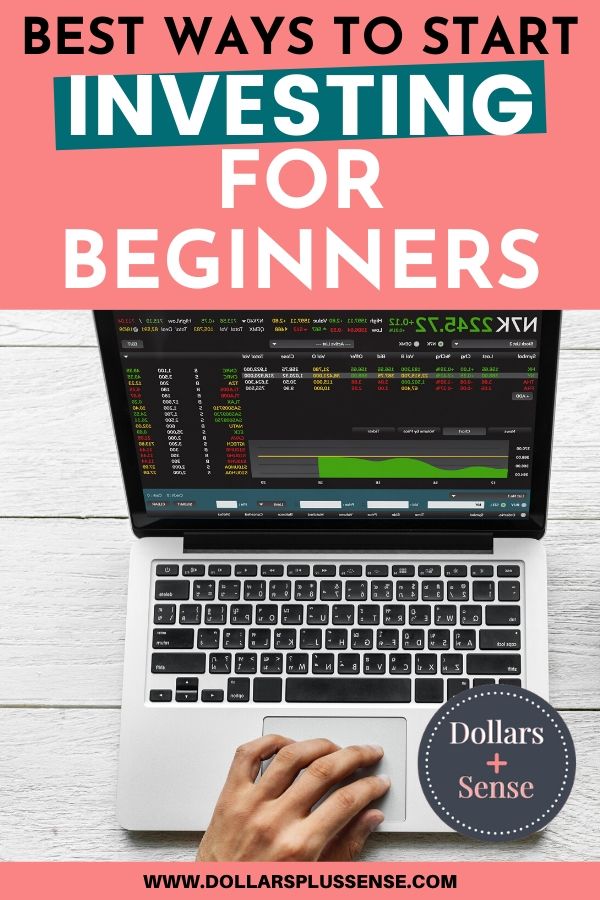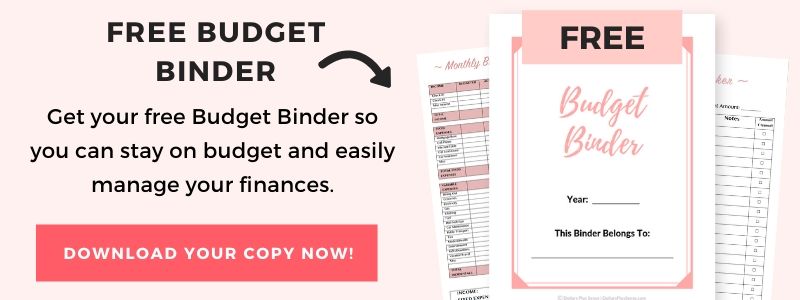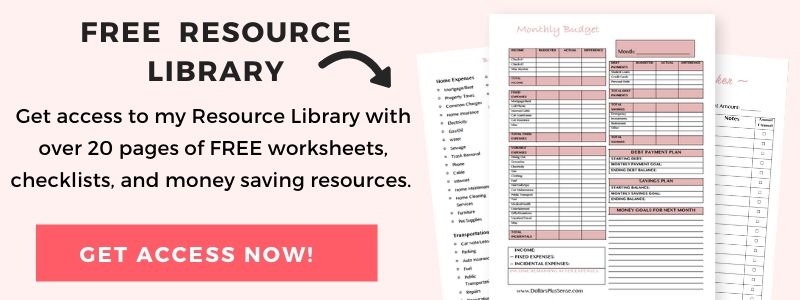Are you interested in investing, but don’t know where to start? This article will show you the basics of investing. I like to call it “Investing 101.”
There are so many ways you can invest your money; such as stocks, bonds, mutual funds, exchange-traded funds, and real estate just to name a few. Before you get excited and set out to start investing, you need to increase your financial knowledge to make your best investing decision. Let’s start by defining a few different investment vehicles.
Ways To Invest
Stocks
A stock represents the share or ownership in a company. For example, when I buy an individual stock in Apple, I am buying one or several shares of ownership in the company.
Holders of common stock have voting rights at shareholders’ meetings and the right to receive dividends if they are declared.
I personally use Robinhood.com to purchase individual stocks. I like this website and app because you can buy and sell stocks for free—there are no commissions or fees.
Most other brokerage firms charge at least a $4.95 fee per trade, and some have hidden fees.
Sign up today and you and I can get a free stock like Apple, Ford, or Sprint. With Robinhood you also don’t need a minimum account balance, so you can get started right away.
Bonds
A bond is when you lend your money for a predetermined amount of time and receive a particular rate of interest. You can purchase a bond that is issued by the government or a company.
Bonds differ from one to another based on a few things, such as:
- How long it takes for your bond to mature (the date the original amount of money you lent is due);
- The creditworthiness of the issuer; and
- The type of organization that issues them. In other words, what kind of organization are you lending your money to—government or private company.
Mutual Funds
A mutual fund is where you and other investors pool their money together to invest in stocks, bonds, or other investment vehicles.
An investment manager professionally manages the mutual fund and invests the money for the investors. In exchange, the fund charges investors a fee, which may run around 1% of the assets annually or more. That means a fee of $100 for every $10,000 you invest.
To keep track of who invested what, each investor is given “shares” which represents their stake in the total investment.
Mutual funds are valued at the end of the trading day. Any requests to buy or sell shares are executed after the market close. At the end of the investment day, each investor knows exactly how much each share is worth.
The best mutual funds offer low-cost professional management and oversight, as well as diversification. Diversifying means you hold a variety of investments and you are not investing everything in one area or one industry.
![]()
Index Funds
Index funds are a type of mutual fund that is mostly managed by a computer.
An index fund buys all the shares that make up a particular index, like the Standard & Poor’s 500 index of blue-chip stocks or the Russell 2000 index of small-company shares. The aim is to replicate the performance of that entire market.
In the long run, index funds generally do better than mutual funds where managers pick the stocks and bonds to put in the funds. Research shows it is inherently difficult to pick winning stocks consistently over long periods of time.
Because index funds require no analysts to research companies, they are much cheaper to operate. The Schwab S&P 500 Index fund, for example, charges just 0.09%, or $9 for every $10,000 you invest.
Exchange-Trade Fund
An exchange-trade fund (ETF) is a lot like mutual funds—specifically similar to index funds—but it is traded on the stock exchange. In other words, it trades during the trading day just like shares of stock instead of directly from a mutual fund company.
Unlike mutual funds, which are valued at the end of each trading day, ETFs are valued constantly while the markets are open.
Operating costs of ETFs are generally cheaper than those of mutual funds. However, one downside to ETFs is, depending on which broker you use, you may have to pay trading costs and commission when you buy and sell your ETF—just like a stock.
Real Estate

You can invest in real estate by buying a commercial or residential property directly. You can also indirectly invest in real estate through real estate investment trusts (REITs).
A REIT is when a corporation (or trust) uses investors’ money to purchase and operate income-producing properties. REITs are traded like stocks. There are mutual funds and ETFs that also invest in REITs as well.
How To Decide What To Invest In?
The next thing you will learn in Investing 101 is how to decide what to invest in? There are a few things to consider when deciding what to invest in. Consider things such as:
- Your personal situation (such as your age or your tolerance to risk).
- Timeframe (how long you want to invest for)
- Tax consequences
- Fees
Personal Situation
How you divide your money amongst your investments should depend on your personal situation and financial goals. For example, the younger you are, the more you should focus on long-term investments.
The younger you are, the more money you can devote to ownership investments (such as stocks and real estate) that will yield a higher return.
In other words, because ownership investments (such as stocks) are riskier and more volatile investments, you should plan to hold them long-term when investing in them.
Timeframe

Another thing to consider when deciding what to invest in is you have to look at your timeframe. Your investment needs to match your timeframe.
For example, if you expect to need your money within a year, you want to invest in safe investments such as CDs or money market accounts. If you expect you won’t need your money for ten years or more, you can invest in more risky investments; such as stocks and real estate.
Tax Consequences
Most importantly, do your research before you invest and pay attention to your tax consequences. Take advantage of tax-deductible retirement accounts and understand the impact of your tax bracket when investing outside tax-sheltered retirement accounts.
Fees
Try to minimize your investment fees. The more you pay in commissions and management fees on your investments, the less return you will have. Also, the longer it will take for you to meet your financial goals.
Asset Allocation

Once you decide what investment vehicles you will like to invest in, the next thing to consider is how you want to allocate your assets. In other words, how much of your money do you want to put towards stocks, bonds, REITs, etc?
I recommend investing in multiple investment vehicles to diversify your portfolio. A portfolio is the collection of all your investments.
Diversification is important because it helps you to reduce your risk of losing everything if one part of your portfolio is not performing well. So for example, I invest in stocks, bonds, ETFs, and real estate. When my stock values go down, my bond values will probably rise, and vice versa.
Where To Get Money From To Invest?
The first thing you need to do to make sure you have enough money to invest is to create a budget. Having a budget will allow you to see where your money is going and where you can cut expenses to have more money to invest.
If you’re just starting out, you can download this FREE Monthly Budget Worksheet.
However, if you want to get serious with your savings and need something a little more sophisticated, you can get my Monthly Budget Template. This is the template I actually used to save over 50% of my income and it is the same template I use to this date.

What To Take Away From “Investing 101?”
In summary, there are so many ways you can invest your money. But you need a budget to make sure you have enough money to invest.
Some things you can invest your money in are: stocks, bonds, mutual funds, ETFs, and real estate to name a few.
Before deciding what to invest in, consider your personal situation, how long you want to invest your money, tax consequences, and fees. Next, decide how much of your money you want to invest in each asset. Finally, always do your research and due diligence before you invest in anything.
Now that you know the basics about investing and got through “Investing 101,” continue your financial education by taking advantage of my FREE Resource Library. In the Resource Library, you will find TONS of information, FREE printables, worksheets, checklists, and money-saving tips!
Related Articles:
- Best Ways To Invest In The Stock Market For Beginners
- What Is An Opportunity Zone Fund And How Does It Work?
- How To Successfully Invest In Real Estate: 3 Simple Steps
If you want to remember this article, pin it to your favorite Pinterest board.







Great post, thanks for sharing!